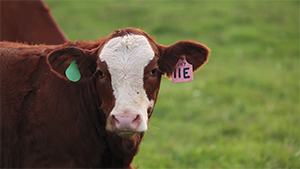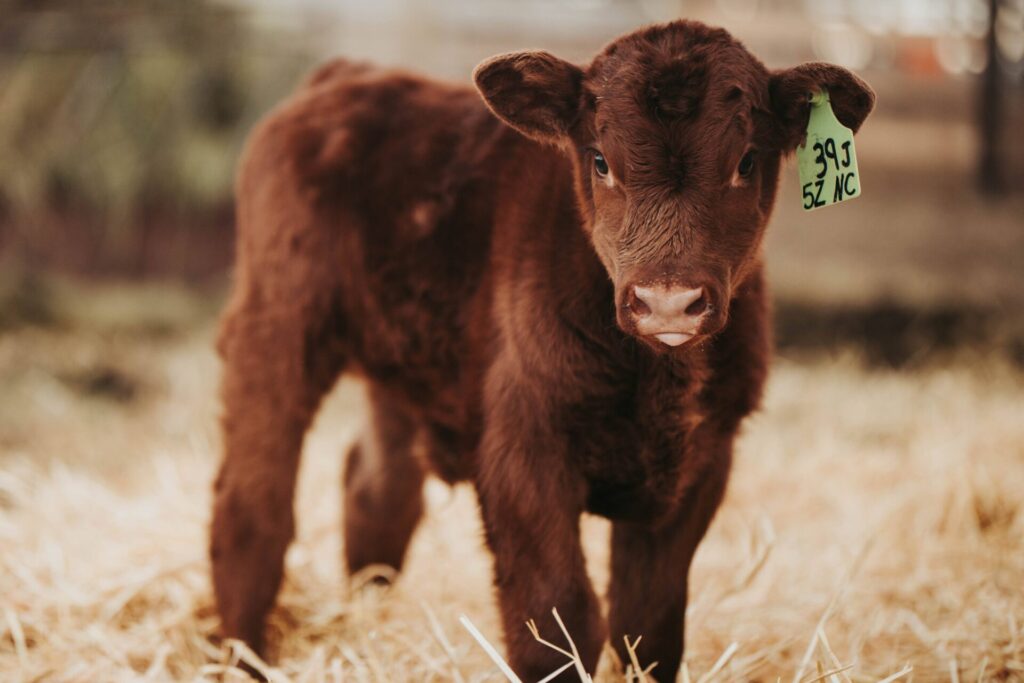
This Level 3 animal health & performance record-keeping resource has been designed to build upon the modules covered in Level 1 and Level 2 The record-keeping and benchmarking modules are designed to be used by a wide range of producers and management systems. The purpose of Level 3 is to dig deeper into analysis and application of collected farm data.
Animal health and performance records can be helpful for making management decisions. Keeping track of your health treatments and performance indicators throughout the year can be useful information to have when evaluating your production goals. Having readily accessible records can also be handy when marketing cattle to prospective buyers.
Individual Identification

Apart from the benefits of using individual identification for traceability purposes, individual identification is a necessary tool when making genetic improvement decisions. For example, if you are raising replacement heifers or bulls, being able to trace back specific performance information to the individual animal level is valuable. Individual identification and linking calf information to the dam can also allow you to make more informed culling decisions based on calf or dam performance.
Aside from the required CCIA tags, tattoos and/or brands, some producers also include a management tag that is used for production and data management purposes. They key is to determine which type of identification system works best for your needs.
Data to record:
- Individual animal identification
When to record it:
- At birth
- Following purchase
Example:
At birth, calves receive any treatments or special management identified by the calf health protocol, and a management tag that includes a number, letter for the year (in 2020 the letter is H), the dam’s ID number, and if known, the sire’s ID. After a few years of using individual identification, replacement decisions can be made based on past performance of the dam and her progeny.
Example goals:
- Tag 90% of calves in the 2021 calf crop at birth with a farm management tag
- Link any prospective replacement heifers or bulls with their dams in 2021
Sorting Cow-Calf Records with Management Groups

A contemporary or management group is a group of animals that are of the same sex, are similar in age, and have been raised in the same management group (same location on the same feed and pasture, at the same time) and if applicable, were weaned and weighed on the same day. Contemporary groups should include as many cattle as can be accurately compared under similar management. For example, if first-calf heifers are given preferential treatment (better feed) prior to weaning their calves, these calves should be designated into a separate contemporary group than the calves from mature cows1.
Sorting animal records based on contemporary groups reduces variability between groups and provides greater ability to make clear comparisons among groups of animals by controlling for management and environmental conditions.
Data to record:
For each group, record the following:
- Individual animal ID
- Sex
- Age
- Location
- Diet (e.g. creep fed)
- Weights
- Other applicable information such as weaning date or whether the offspring is from a first-calver
When to record it:
- At sorting
- At weaning
Example:
To compare the weaning weights of 50 calves coming off the same pasture on the same day, the calves are grouped based on sex, age, and whether their dam was a first-calf heifer or mature cow. The average weight of the 50 calves as a large group is 604 lbs. By breaking down the groups of calves into contemporary groups, the effect of the dam and sex is more obvious after calculating the pounds gained per day.
| Dam | Sex | Total calves | Average Age (days) | Average Weaning Weight (lbs) | Lbs/day |
|---|---|---|---|---|---|
| First calvers | Heifers | 3 | 250 | 500 | 2 |
| Bulls | 2 | 250 | 550 | 2.2 | |
| Mature cows | Heifers | 20 | 220 | 600 | 2.7 |
| Bulls | 25 | 220 | 625 | 2.8 |
Calculating 205-Day Self-Adjusted Weaning Weights
Calculating the 205-day self-adjusted weaning weight is one step beyond the comparison of weaning weights at the individual or contemporary group level. To make a fair comparison of calves of various ages and from dams of various ages, calculating a 205-day adjusted weaning weight can give a more accurate picture of both dam and calf performance. By making this adjustment the variability of the calf’s and dam’s ages is removed which provides a better picture of how the calves are performing because the calves are now compared as if they were the same age, and from similarly aged dams.
The Beef Improvement Federation (BIF), an international organization dedicated to standardizing animal performance records across breeds and countries, recommends that weaning weights be standardized to 205 days-of-age and a mature age-of-dam basis. The chart below provides adjustment factors to use when calculating 205-day weights.
Table 1: BIF Standard Adjustment Factors for Weaning Weight
| Age of Dam at Birth of Calf | Male | Female |
|---|---|---|
| 2 | +60 | +54 |
| 3 | +40 | +36 |
| 4 | +20 | +18 |
| 5-10 | 0 | 0 |
| 11 and older | +20 | +18 |
Data to record:
- Individual ID
- Sex
- Birth weight
- Weaning weight
- Weaning age
- Age of dam
When to record it:
- Collect ID, sex, birth weight and dam age at birth
- Collect weaning weight and age at weaning.
Example:
From your records, you have identified achieving higher weaning weights as one of your production goals. From your current calf crop you want to select the heifer calves that will have the best chance of producing calves with higher weaning weights. To do this, calculate the 205-day adjusted weaning weights for the group of heifer calves, and make a decision based on the results.
For example, a 220-day old heifer calf had a weaning weight of 610 lbs and a birth weight of 85 lbs. Her dam was 4 years old at her birth.
To calculate the 205-day adjusted weight:
610 lbs Weaning weight – 85 lb birth weight = 525 lbs
525 lbs ÷ 220 days old = 2.39 lbs/day
2.39 lbs/day X 205 days = 489 lbs + 85 lb birth weight = 574 lbs
Add 18 lbs dam adjustment = 592 lbs adjusted 205-day weight
Example goals:
- Link heifer performance data to their dams for the next calf crop
- Use adjusted weaning weight as a selection criterion when selecting the next group of replacement heifers
- References
-
- Beef Improvement Federation (2019) Weaning Weights
- Beef Improvement Federation (BIF) Calving Difficulty
- Beef Improvement Federation (BIF) Birth Weight
- Beef Improvement Federation (BIF) Yearling Weight
- A.L. Brooks, R.E. Morrow, R.S. Youngquist (1985) Body composition of beef heifers at puberty. Theriogenology, Volume 24, Issue 2, Pages 235-250.
Feedback
Feedback and questions on the content of this page are welcome. Please e-mail us.
This content was last reviewed April 2023.